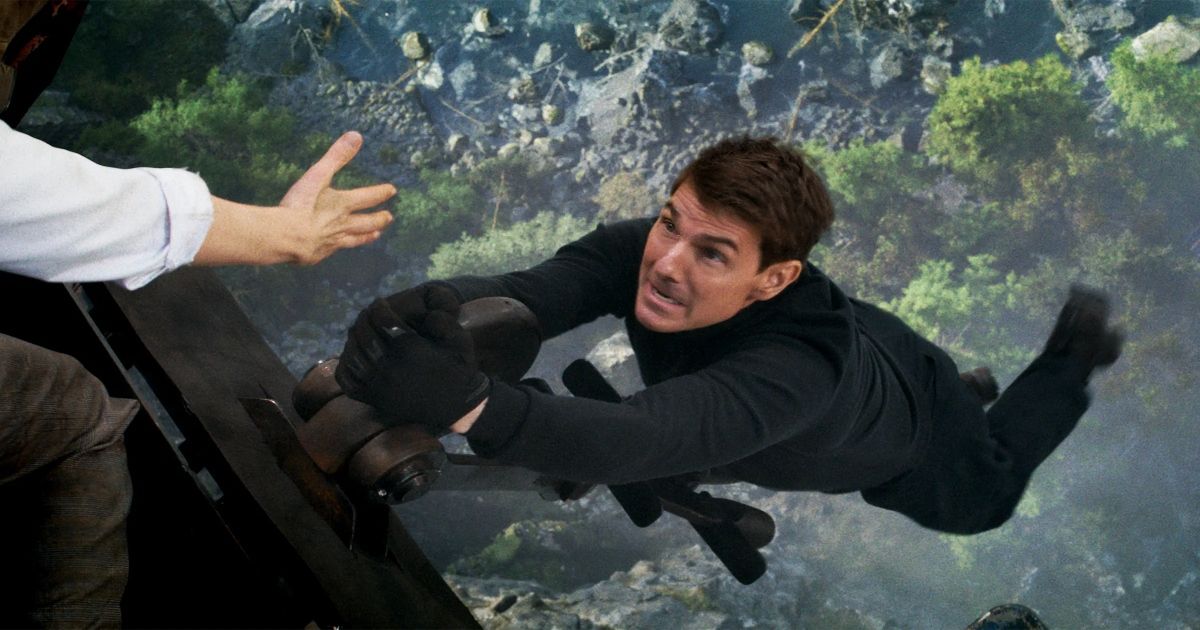From free-falling from a C-17 plane to climbing the tallest building in the world in Dubai, the Mission: Impossible franchise is known for its gravity-defying stunts. These stunts are possible because of stunt logistical teams, practical effects, and computer-generated imaging. However, in the latest iteration of the franchise Mission: Impossible - Dead Reckoning Part One, Tom Cruise, the star and producer of the film, desired the film’s stunts to be practical and not CGI.
While the film does feature some incredible stunts, other stunts did not make it into the final cut. Director and co-writer Christopher McQuarrie has revealed while appearing on the Empire Spoiler Special Podcast that a dangerous train sequence was not in the final cut due to poor test screenings with audiences.
“It was supposed to be something we did with a resettable rig where everything could be very predictable, and nothing we did worked, and ultimately the actors had to risk their lives and do it practically. [After test viewings,] the train was a little bit like the car chase in Jack Reacher, where we couldn’t understand why we kept getting this note about length. Finally, there was one shot in the Jack Reacher chase I pulled out, and it taught me everything about shooting action. With the train, I kept thinking, ‘Is this the shot?’ And we kept pulling, and we kept getting the note, and eventually we identified what it was. The work that went into what was holding back the sequence was extraordinary – it was days, and it was a struggle, and it was very, very risky. We took it out, and the scene just sang.”
Tom Cruise Wants Stunt Actors to Get More Recognition
In addition to using more practical effects and stunts, Cruise also supports the stunts performed by the actor themselves rather than stunt doubles. Keanu Reeves and former stunt actor Chad Stahelski have done significant work highlighting the importance and effort of stunt choreography in the John Wick franchise. Earlier this year, Stahelski came out in support of having stunts put up for awards due to the logistics and risk.
“We’ve been meeting with members of the Academy and actually having these conversations, and, to be honest, it’s been nothing but incredibly positive, incredibly instructional...I think, for the first time, we’ve made real movement forward to making this happen,” explained Stahelski. "The question is, we haven’t had the real talks about how do you even determine what to award...Like is it for best stunt? Is it best choreography? Best action sequence? All these are great questions that just need to be talked about by smart individuals on both sides of it, the stunt community and the Academy.”
The risk factor is vital for every stuntperson and director to consider. Unfortunately, there have been a number of injuries and fatalities that have occurred on set involving stunt-people. Cruise is no stranger to experiencing these events. In his iconic Top Gun (1986), stunt pilot Art Scholl died while filming an upside-down spin in a Pitts S-2 plane, and in his American Made (2015), a Piper Smith Aerostar 600 crashed into the Andes, killing two and paralyzing one. While Cruise remains a strong supporter of stunt artists, more work clearly needs to be done to give stunt-people proper appreciation.


